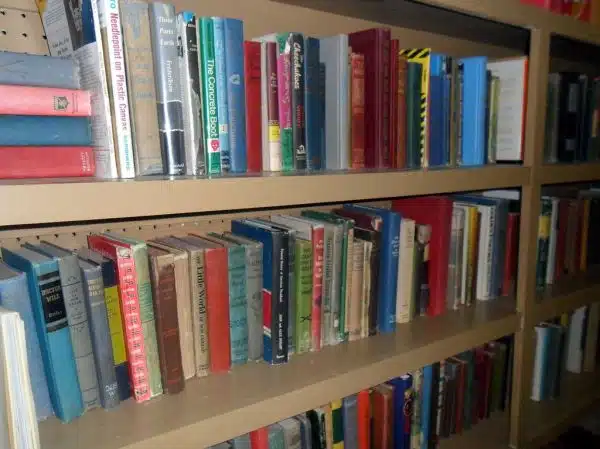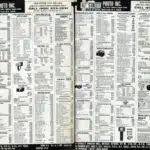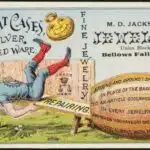Selling used books is an art that requires a careful understanding of the market, consumer behavior, and pricing strategies. Whether you are looking to sell your personal library or start a book-selling business, there are several key factors to consider in order to maximize your profits and ensure customer satisfaction.
One of the most critical aspects of selling used books is identifying the right market for your inventory. This involves conducting thorough research on the types of books that are in high demand, as well as understanding the demographics and preferences of your target audience. Additionally, it is important to price your books competitively while maintaining a reasonable profit margin. By following these guidelines and implementing effective marketing techniques, you can successfully sell your used books and provide valuable resources to readers around the world.
Understanding Your Inventory
While it may be tempting to simply gather all of your used books and sell them as a group, that approach will not maximize profits. Instead, by taking the time to understand your inventory, you can identify rare or highly sought-after titles that can fetch a higher price. This is especially important for textbooks or academic resources that are frequently updated or out of print.
To begin understanding your inventory, start by sorting and categorizing your books. This will allow you to easily identify which titles are in high demand and which may be less desirable. Consider factors such as the author, publication date, and condition of each book to determine its potential value.
In addition to identifying rare titles, understanding your inventory also involves being realistic about what may not sell. While sentimental value may cause hesitation in letting go of certain books, it’s important to focus on what will generate profit. By taking this approach, you can streamline the selling process and make the most out of your used book collection. In the subsequent section, we’ll discuss how to effectively sort and categorize your books to further optimize sales opportunities.
Sorting And Categorizing Your Books
Book organization is a crucial step in selling your used books. Sorting and categorizing your books not only makes them easier to sell, but it also helps you determine which ones are worth selling and which ones should be donated or recycled. One way to organize your books is by genre, such as fiction, non-fiction, biographies, or textbooks. You can also categorize them by author or publication date.
Before deciding whether to sell or donate your books, consider their condition. If the book is damaged beyond repair, it may be best to recycle it. However, if the book is in good condition but simply no longer needed, donating it may be a great option. This allows someone else to enjoy the book while also supporting a good cause.
If you decide to sell your books, there are several options available. You can sell them online through websites such as Amazon or eBay, or you can sell them in person at a local used bookstore. Some online retailers will even buy your books directly from you for cash or store credit. Consider researching different options and choose the one that works best for you.
- Make a list of popular book genres and note which ones you have in your collection.
- Create a separate pile for damaged books that need to be recycled.
- Research local donation centers and charities that accept book donations.
- Look into online retailers that buy used books directly from sellers.
Sorting and categorizing your used books can be a time-consuming process but it’s well worth it when it comes to maximizing profits while also giving back to others who may benefit from the material. In evaluating book condition, take into account factors such as wear and tear on covers or pages, missing pages or markings inside the book that could decrease its value. By following these steps and taking care of your used books properly before selling them off, not only will they fetch higher prices on the market but also ensure that someone else gets access to quality reading material.
Evaluating Book Condition
The condition of a book is one of the most important factors that determine its value. A well-maintained book will fetch a higher price than a damaged one. Common book defects that decrease the value of used books include stains, tears, creases, and water damage. It is essential to check the cover and pages for any signs of wear and tear before putting it up for sale.
Proper book care is crucial in maintaining a book’s condition. Books should be kept away from direct sunlight, moisture, and extreme temperatures. They should also be handled with clean hands to avoid leaving fingerprints or oils on the pages. While reading, it is advisable to use bookmarks instead of folding down corners or using random objects as markers since they can cause creases or tears.
Determining market value requires an accurate assessment of the book’s condition. This involves taking into account factors such as rarity, age, edition, and popularity among readers. In addition, the current market demand for similar books should also be considered when setting prices. Overall, assessing book condition correctly is crucial in ensuring that sellers get fair prices for their used books while buyers get quality products at reasonable prices.
Determining Market Value
Before selling your used books, it is crucial to determine their market value. This involves analyzing demand for the book and comparing prices with similar listings on various platforms. Failure to determine the appropriate market value may result in either overpricing or underpricing, leading to a loss of potential buyers.
Analyzing demand involves understanding how many people are interested in purchasing your book. This can be done by researching the book’s popularity, its relevance in today’s world, and how much it is sought after by readers. Understanding the demand for your book will help you price it accordingly and make it more attractive to potential buyers.
Comparing prices is another crucial aspect of determining market value. Researching similar listings on different platforms such as Amazon, eBay, and local secondhand shops can provide insight into how much other sellers are pricing their books. By doing this, you will be able to price your book competitively while still making a profit.
When determining the market value of your used books, analyzing demand and comparing prices are essential steps that cannot be overlooked. Knowing these factors will help you set an appropriate price for your book and attract potential buyers effectively. The next step in selling your used books is researching your target audience, which we will explore further in the following section.
Researching Your Target Audience
After determining the market value of your used books, the next step is to identify potential buyers. Analyzing purchasing habits can help you determine where to sell your books and how to market them effectively. One key factor to consider is demographics. Different age groups and interests may have varying preferences for book genres and formats. For instance, younger readers may prefer e-books while older readers may still prefer physical copies.
Another important aspect to consider when analyzing purchasing habits is buying behavior. Some buyers may be more interested in rare or collectible editions while others are simply looking for affordable options. Understanding these factors can help you tailor your marketing strategy to reach your target audience more effectively. You can also use this information to choose the right sales channels.
Choosing the right sales channels can greatly impact the success of selling your used books. There are a variety of options available including online marketplaces, local bookstores, and social media platforms. Each channel has its own strengths and limitations, so it’s important to research and compare before making a decision. For example, online marketplaces like Amazon or eBay offer a wider reach but also involve shipping costs and fees, while local bookstores may offer lower prices but limit your potential buyer pool.
By identifying potential buyers and analyzing their purchasing habits, you can tailor your marketing strategy accordingly and choose the most effective sales channels for selling your used books. It’s important to remember that selling used books requires patience and persistence, but with the right approach, you can turn those old books into profit.
Choosing The Right Sales Channels
When setting a price for used books, it is important to consider the condition of the book and its market value. Additionally, research can be done to compare similar books on different online platforms to determine a competitive price. Online platforms such as Amazon, eBay, and AbeBooks are popular sales channels for used books, with each platform having its own unique policies and fees. In order to maximize profits, sellers should choose the platform that best meets their needs and is the most cost effective.
Setting A Price
When selling your used books, it’s important to set a price that is fair and reasonable for both you and potential buyers. There are several factors to consider when setting a price for your used books, such as the book’s condition, rarity, and demand. It’s important to research the current market value of similar books to ensure that you’re not over or underpricing your items.
One tip for negotiating prices with potential buyers is to be open to offers. If a buyer is interested in purchasing one of your books but isn’t willing to pay the full asking price, consider negotiating with them. You can offer discounts for buying multiple books or bundle deals. However, it’s important not to sell yourself short by accepting offers that are too low.
Another factor to consider when setting a price for your used books is the sales channel you choose. Some platforms may take a percentage of your profits or charge fees for listing items. Make sure you factor in these costs when setting your prices. Additionally, if you choose to sell through online marketplaces such as Amazon or eBay, be aware of their pricing algorithms and adjust your prices accordingly. By taking these tips into consideration, you can set fair prices for your used books and attract potential buyers while still making a profit.
Online Platforms
When it comes to selling used books, choosing the right sales channel is crucial in maximizing profits. Online platforms have become increasingly popular as a sales channel for book resellers. These platforms provide access to a large customer base and easy-to-use tools for listing and managing inventory. However, caution should be exercised when selecting an online platform to avoid scams and ensure that you’re getting the best value for your books.
One of the most important considerations when selecting an online platform is the fees charged by the platform. Some platforms charge a percentage of your profits or a flat fee per item sold. It’s important to factor these costs into your pricing strategy as they can significantly impact your profit margins. In addition, some platforms offer premium features such as enhanced visibility or priority customer support for an additional fee. Consider whether these features are worth the cost before signing up.
Another key consideration when selecting an online platform is the platform’s reputation and level of security. Scammers often target online marketplaces with fake listings or fraudulent payment methods. Make sure to research the platform thoroughly before using it to sell your books. Look for reviews from other sellers, check if there are any reported scams associated with the site, and make sure that payment transactions are secure and protected. By taking these considerations into account, you can choose an online platform that maximizes your profits while minimizing risks and avoiding scams.
Setting Competitive Prices
Picture yourself browsing through a bookstore, scanning the shelves for an interesting read. You come across two books that seem to cover the same topic, but one is priced significantly higher than the other. Which do you choose? Most likely, you’ll go with the cheaper option. The same principle applies when it comes to selling your used books – setting competitive prices is key to attracting buyers.
Consulting experts in the field of book reselling can provide valuable insight into how much your books are worth. These professionals have experience in pricing and can offer advice on what price range will attract buyers while still making a profit for the seller. Additionally, analyzing competition in online marketplaces such as Amazon or eBay can give an idea of what similar books are selling for and how much demand there is for them.
It’s important to strike a balance between pricing competitively and not undervaluing your books. Setting prices too low may attract buyers, but it also means losing out on potential profits. Conversely, overpricing may deter potential buyers altogether. By consulting experts and analyzing competition, you can set reasonable prices that appeal to buyers while ensuring a fair return on investment. In the next section, we’ll discuss how creating effective book descriptions can further enhance your chances of selling your used books at a competitive price.
Creating Effective Book Descriptions
Crafting compelling descriptions is a crucial part of selling used books. A well-written description can grab the attention of potential buyers and entice them to make a purchase. When writing book descriptions, it’s essential to focus on the main selling points of the book. This includes highlighting the author, genre, and any unique features or themes that may appeal to readers.
Writing attention-grabbing headlines is also an important aspect of creating effective book descriptions. The headline should be clear and concise while still capturing the essence of the book. It’s also helpful to use descriptive language that paints a vivid picture for potential buyers. For example, instead of simply stating that a book is about “love,” consider using phrases like “a heart-warming tale of love and loss.”
Overall, crafting engaging book descriptions takes time and effort but can pay off in the long run. By highlighting the best aspects of your used books and captivating potential buyers with eye-catching headlines, you increase your chances of making a sale.
Transitioning into the subsequent section about utilizing eye-catching photos, it’s important to note that visual elements can also play a significant role in selling used books online. In addition to writing compelling descriptions and headlines, using high-quality photos can further entice potential buyers to make a purchase.
Utilizing Eye-Catching Photos
Are you tired of your used books just sitting on your shelves, collecting dust? Do you want to turn them into cash? Well, the first step in selling your used books is to create eye-catching photos that will attract potential buyers.
Using natural lighting is crucial when taking photos of your books. Avoid using artificial light or flash as it can affect the color and quality of the photo. Find a spot near a window where there’s plenty of natural light streaming in. This will give your photos a warm and inviting feel that will make them stand out from other sellers.
DIY photography tips for book selling are easy to find online. But, incorporating props in photos can add an extra layer of uniqueness to your images. Try adding some decorative items like flowers or vintage items alongside your books to create a beautiful theme. Here are some unique book photography ideas:
- Place open books on top of each other, creating different heights and angles.
- Use a piece of fabric as a background to add texture and visual interest.
- Take photos from different angles and distances to show different perspectives.
Developing a strong brand identity is essential for any successful business. In the next section, we’ll discuss how you can create a recognizable brand that sets you apart from other book resellers. By utilizing these DIY photography tips for book selling, you’re one step closer to creating an enticing online presence that will help sell your used books quickly and effectively.
Developing A Strong Brand Identity
When it comes to selling used books, one important aspect to consider is building a strong brand identity. A strong brand identity can help you differentiate yourself from other sellers and make it easier for customers to remember your business. One key element of building a strong brand identity is brand consistency. This means that all aspects of your business, from your website and social media profiles to your packaging and customer service, should reflect the same visual style, tone, and values.
Visual branding techniques can play an important role in developing a consistent brand identity. For example, using the same color scheme and font across all marketing materials can create a cohesive look that helps customers recognize your business. Similarly, creating a logo or visual symbol that represents your business can be an effective way to build brand recognition over time. It’s also important to think about how you communicate with customers – using a consistent tone of voice in all written communication (such as emails or social media posts) can help reinforce your brand personality.
Ultimately, building a strong brand identity can help you attract and retain customers over time. By creating a consistent visual style and tone of voice across all aspects of your business, you’ll make it easier for customers to remember who you are and what you stand for. In the next section, we’ll explore how building customer trust and loyalty can further enhance your ability to sell used books effectively.
Building Customer Trust And Loyalty
As a book seller, it is important to build customer trust and loyalty. This can be achieved through various methods, but one effective way is to provide personalized recommendations. One anecdote that illustrates this is when a customer was looking for a specific book, but I recommended another book based on their interests. The customer ended up purchasing the recommended book and later returned to purchase more books, stating that they appreciated my recommendation and trusted my judgment.
To further build customer trust and loyalty, it is essential to gather customer feedback and testimonials. This allows potential customers to see the positive experiences others have had with your business. A numeric list of three benefits of customer feedback include: 1) it provides insight into areas where improvement may be needed, 2) it helps establish credibility and trust with new customers, and 3) it can lead to increased sales as satisfied customers are likely to spread positive word-of-mouth.
Overall, building customer trust and loyalty takes effort but is crucial for long-term success as a book seller. By providing personalized recommendations and gathering customer feedback, you can establish yourself as a trustworthy source for books. In the next section, we will discuss how providing excellent customer service can further enhance your reputation as a reputable book seller.
Providing Excellent Customer Service
As a book seller or reseller, providing excellent customer service is paramount to your success. One of the keys to achieving this is setting proper expectations with your customers. You should be transparent about the condition of the books you are selling and provide accurate descriptions that include any flaws or damages. Additionally, it is important to communicate clearly about shipping and handling times, so customers know when they can expect their purchase.
Another important aspect of customer service is handling difficult customers. No matter how well you set expectations, there will always be some customers who are unhappy with their purchase or experience. In these situations, it is important to remain calm and professional. Listen carefully to their concerns and try to find a solution that satisfies both parties. Remember that even though you may not agree with the customer’s complaint, it is essential to acknowledge their feelings and do your best to address them.
To help ensure that all of your customers have a positive experience when buying from you, consider creating a table outlining your policies for returns, refunds, and exchanges. This will make it clear what options customers have if they are not satisfied with their purchase and can help avoid confusion or misunderstandings. Additionally, including a FAQ section on your website can also be helpful in addressing common questions or concerns that customers may have.
In providing excellent customer service as a book seller/reseller, setting proper expectations while handling difficult customers are two key areas where focus must be given attention in order to avoid negative feedbacks from clients which could affect sales. The next step after providing quality customer service would be ensuring efficient shipping and handling logistics which would be discussed in subsequent sections.
Shipping And Handling Logistics
As a book seller, proper shipping and handling logistics are paramount to ensuring customer satisfaction. The first step in this process is acquiring appropriate packing materials. It is important to use sturdy boxes or envelopes that will protect the books from damage during transportation. Depending on the size and weight of the book(s), additional padding such as bubble wrap or packing peanuts may also be necessary.
Postage costs and international shipping can be complicated aspects of shipping used books. It is important to accurately calculate postage costs to avoid overcharging customers or losing money on shipping expenses. Additionally, when shipping internationally, it is crucial to be aware of customs regulations in different countries. This includes understanding what items are prohibited from entering certain countries and filling out any necessary customs forms.
While managing the logistics of shipping can seem overwhelming at times, it is essential for maintaining a successful used book business. By properly packing books and understanding postage costs and customs regulations, book sellers can ensure that their customers receive their orders in a timely manner without any complications. In the next section, we will explore how to manage inventory and sales data effectively to further streamline your used book business.
Managing Inventory And Sales Data
Once you’ve listed your used books for sale, it’s important to keep track of your inventory and sales data. This will enable you to make informed decisions about pricing, restocking, and optimizing your sales strategy. One way to do this is by using a spreadsheet or inventory management software to track your sales and inventory levels.
Tracking sales is essential for understanding which books are selling well and which ones aren’t. By keeping tabs on what’s popular, you can adjust your inventory accordingly and optimize your pricing strategies. For example, if a certain genre or author is selling particularly well, you may want to stock up on more titles in that category or raise the prices slightly to take advantage of demand.
Optimizing pricing strategies can also help increase your sales volume. Experiment with different pricing points to see what works best for each book or category. You may find that lowering prices slightly increases the number of sales enough to offset the lower profit margins. Alternatively, raising prices on rare or hard-to-find books may attract collectors who are willing to pay a premium.
By tracking your sales and inventory data, as well as experimenting with pricing strategies, you’ll be able to make informed decisions that help maximize profits from selling used books online. In the next section, we’ll discuss how staying up-to-date on industry trends can further enhance your reselling success.
Staying Up-To-Date On Industry Trends
As a book seller or reseller, it is essential to stay up-to-date with the latest industry trends. Doing so will enable you to make informed decisions about buying and selling books, as well as keep your business competitive in a constantly evolving market. Staying connected to industry news and networking opportunities can help you stay ahead of the curve and increase your chances of success.
One way to stay current on industry trends is to attend relevant events. There are numerous conferences, workshops and trade shows that take place throughout the year where you can learn from experts in the field, connect with other professionals in the industry, and gain insights into new developments or emerging trends. Attending these events can also provide valuable networking opportunities that allow you to build relationships with potential customers, suppliers, and partners.
In addition to attending events, it’s also important to stay informed through other means such as reading trade publications, following relevant blogs or social media accounts, and joining professional groups or associations. By staying abreast of changes in the market and keeping up with what others in the industry are doing, you can make more informed decisions about which books to buy and sell, how much to charge for them, and how best to market them.
- Join professional groups or associations
- Attend relevant conferences and workshops
- Follow relevant blogs or social media accounts
- Read trade publications
Staying up-to-date on industry trends is vital for any book seller or reseller looking to succeed in today’s market. By taking advantage of networking opportunities and attending industry events while also staying informed through various means such as reading relevant publications or joining professional organizations, you’ll be able to stay competitive while serving your customers better than ever before.
Conclusion
Selling used books can be a lucrative venture, but it requires careful planning and execution. To successfully sell your used books, you must understand your inventory, sort and categorize your books, evaluate their condition, determine market value, research your target audience, provide excellent customer service, handle shipping logistics efficiently, and manage inventory and sales data.
Sorting and categorizing your books is crucial to attracting potential buyers. Evaluating book condition will also determine whether or not a buyer is willing to purchase it. Researching your target audience will help you determine how to market your inventory effectively. Providing excellent customer service is critical in building a positive reputation as a seller.
Managing inventory and sales data is essential for tracking trends within the industry. Staying up-to-date on industry trends can give you an edge when it comes to pricing and marketing strategies. It may seem daunting at first, but with the right approach, selling used books can be both profitable and rewarding.
In conclusion, selling used books requires careful consideration of various factors such as sorting and categorizing inventory, evaluating book condition, determining market value, researching target audiences among others. Successful resellers must provide exceptional customer service while managing logistics efficiently. Managing inventory and sales data helps keep track of current trends in the industry which can give an edge over competitors. By following these steps diligently, one can build a successful career as a professional book seller/reseller that could generate impressive profits over time.
Image Credits
- “Shelf of Used Books” by TheDarkThing (featured)





























